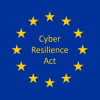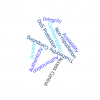An important building block of the IoTAC project is the transfer of the project results to the standardization. These activities promote the success and impact of the achievements developed in the project, such as the IoTAC architecture and its underlying security modules.
Naturally, standardization is a long-lasting process. Therefore, various standards developing organizations (SDOs), committees and initiatives in the context of standardization were approached in the early phase of the project. Of course, we didn’t start from scratch in this matter, because we can benefit from the extensive network of project partners. The first results of the successful efforts in the IoTAC project can now be recorded, which we will report on below.
One of the first IoTAC project results extended the IoT Reference Architecture from the ISO/IEC 30141 (edition 1) standard by extending chapter “11.7 Trustworthiness and the Reference Architecture” by providing examples of useful security related functions assigned to the respective domain. Consequently, the project decided to submit the novelties developed in the project as a comment for the 1st content draft 30141 edition 2 the context of the ISO/IEC JTC 1/SC 41. The comment was introduced as DE39 with the status “Noted”, which means more detailed content must be delivered. In preparation for the discussions in the meetings about the successful introduction of the mentioned comment, the IoTAC project and the submission of the comment DE39 are presented and discussed at the DIN (German Institute for Standardization) NA 043-01-41 AA Internet of Things (IoT) and Digital Twins, which acts as German mirror group of the ISO/IEC JTC 1/SC 41. Thus, the valuable feedback and the expert opinions could be taken into the DoC meetings, where it was discussed recently. The result is a request for modification and adding more details that will be discussed in the CD2. Nevertheless, the current addition, as a result of the IoTAC project about the functional domains together with examples, is intended for Clause 10.2.1 (Section 10 is defined “Trustworthiness”).
At the same time, the IoTAC project is also active in two other initiatives. First, the AIOTI WG Standardisation regarding IoT/Edge Standardization is currently supported. Specifically, the IoTAC project is contributing to the following task forces:
- TF Gap Analysis in Edge Computing
- TF IoT Landscape Maintenance
- TF IoT and Edge Computing EU funded projects landscape
First results could be achieved in the first-mentioned TF in the sense of a report ([1], p. 37, Section 2.15.1, Item 26) in which the functional modules, elaborated in the IoTAC project, are mentioned. Second, the IoTAC project supports StandICT (EU Observatory for ICT Standardization) on their gap analysis and landscape document, specifically the technical working group (TWG) IoT and Edge.
The most recent activity relates to the successful approval of two new work items at the ETSI technical committee “Methods for Testing and Specification” (TC MTS): IoT security module testing (a technical specification) and IoT security architecture conformity (a technical report). Both will be elaborated in the TC MTS Testing Working Group (WG TST) [2]. This offers a perfect opportunity to further consolidate the results from the IoTAC project with project-external experts at a formal (standardization) level.
[1] https://aioti.eu/wp-content/uploads/2022/04/AIOTI-High-Priority-Edge-Computing-Gaps-Final.pdf[2] https://portal.etsi.org//tb.aspx?tbid=860&SubTB=860#/50611-work-programme





